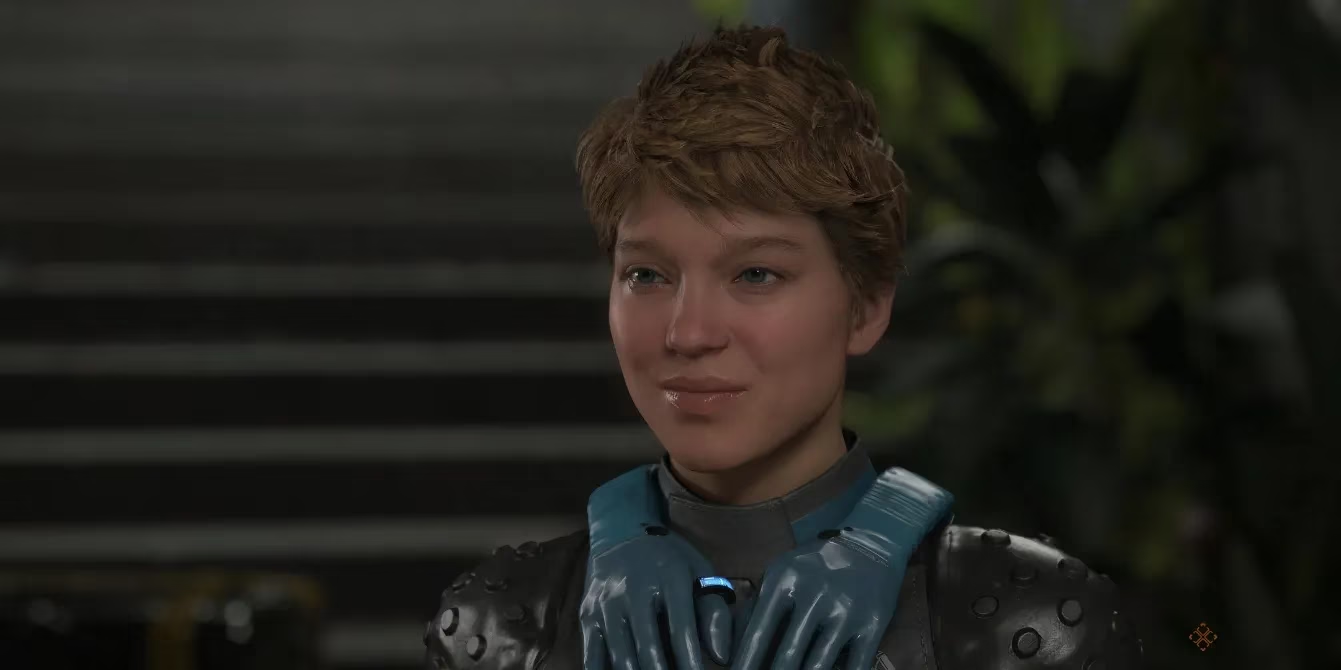I still remember the day Fragile showed up at my doorstep. There we were, Lou and I, enjoying our peaceful existence off the grid in Mexico. The year was 2025, and I thought I'd finally escaped the UCA's grip. The gentle Mexican breeze, the distant mountains, and the simple life we'd carved out for ourselves felt like a dream after everything we'd been through.
Then came the knock at the door.

I should have known better than to answer it. Fragile stood there, that familiar determined look in her eyes, and I felt my stomach sink like a BB unit dropped from a cliff. She had that way about her—like time itself bent around her presence. Before she even spoke, I knew my peaceful days were numbered.
"Sam," she said, "I need you for one more job."
The conversation that followed felt like navigating a minefield while blindfolded. Fragile explained that this mission would clear my standing with the UCA once and for all. She laid out all the details, answered my questions about why I'd been selected, caught me up on what I'd missed while living off the grid. All the while, I felt like a fish being slowly reeled in, flopping helplessly against the inevitable.
When she finished her pitch, time seemed to freeze. Two paths stretched before me, clear as day:
"I'll do it."
"I won't do it."
And here's where things got strange. The first time, I decided to stand my ground. "I won't do it," I said firmly, thinking that would be the end of it.
Everything went black.
Then suddenly, like some cosmic VHS tape being rewound, I found myself back at the beginning of our conversation. "Raindrops Keep Falling On My Head" played softly in the background, just as it had before. But something was different. The photos on my wall had changed—there was a new one showing Fragile asking me to take the mission. A memory of something that hadn't happened yet. Or had it?
I thought perhaps I'd imagined it, so I refused again.
Blackness. Rewind. The song. Another photo added to my wall.
It was like being caught in the throat of a temporal whirlpool, spinning endlessly between moments that both existed and didn't exist. Each refusal added another layer to this bizarre palimpsest of reality, with my wall becoming a gallery of my stubbornness.
After the third loop, I began to understand. This wasn't just a conversation; it was a predetermined path, like water finding its way downhill no matter how many rocks you place in its way. Kojima's fingerprints were all over this moment—a playful nod to player choice in a world where certain outcomes are inevitable.
By the fifth loop, my wall looked like a conspiracy theorist's bulletin board, and I finally relented. "I'll do it," I sighed.
The world moved forward again.
The Illusion of Choice
Looking back now, I realize how clever this little time loop was. In a game all about connections, deliveries, and obligations, my very first meaningful interaction demonstrated that some bonds can't be severed by simple refusal.
The truth is, we players are like porters ourselves, carrying narrative packages from one plot point to another. Sometimes we can choose our route, but the destination remains fixed. This time loop wasn't just a cute Easter egg—it was a perfect metaphor for the relationship between player agency and narrative necessity.
What fascinates me most about this experience is how it reflects Kojima's approach to game design. His worlds are like those Russian nesting dolls made of smoke—seemingly solid until you try to grasp them, revealing layers within layers. The time loop feels like peering behind the curtain of the game's construction, seeing the strings that puppet our experience.
Beyond the Loop
After accepting the mission, the real journey began. The dialogue trees throughout Death Stranding 2 continued to offer choices, but I approached them differently after my temporal imprisonment. Each choice felt weighted with possibility—would this one trap me again? Would that one reveal some hidden facet of the world?
Most choices were indeed just flavor text, coloring Sam's personality without altering the grand trajectory of events. But that opening sequence had planted a seed of doubt, a watchfulness for the moments when choice might matter more than expected.
In many ways, playing Death Stranding 2 feels like navigating a labyrinth where the walls occasionally become transparent, showing you glimpses of other paths and possibilities—paths you can see but never quite reach. The time loop was just the first of many such moments.
Reflections
It's now been several months since I first experienced that time loop, and I've completed the game twice more since then. Each time, I've tried refusing Fragile in different ways, hoping to find some hidden path out of the loop. There isn't one.
And perhaps that's the point. In a world obsessed with player choice and branching narratives, there's something refreshingly honest about a game that occasionally says, "No, this is the way the story goes." It's like trying to avoid a rainstorm by taking different streets—eventually, you'll still get wet.
The experience reminds me of:
-
🔄 A temporal möbius strip where beginning and end chase each other eternally
-
🚪 A revolving door that only spins in one direction
-
🎮 A game that occasionally plays you, rather than the other way around
I wonder what other players felt when they encountered this moment. Did they resist as long as I did? Did they immediately accept the mission? The beauty of Kojima's design is that even this small moment creates a unique story for each player—a personal anecdote about how long they struggled against the inevitable.
As I prepare for another playthrough in late 2025, I'm keeping my eyes open for more of these moments—these little windows into the game's soul that remind us who's really in control of the experience. And sometimes, it isn't us.
